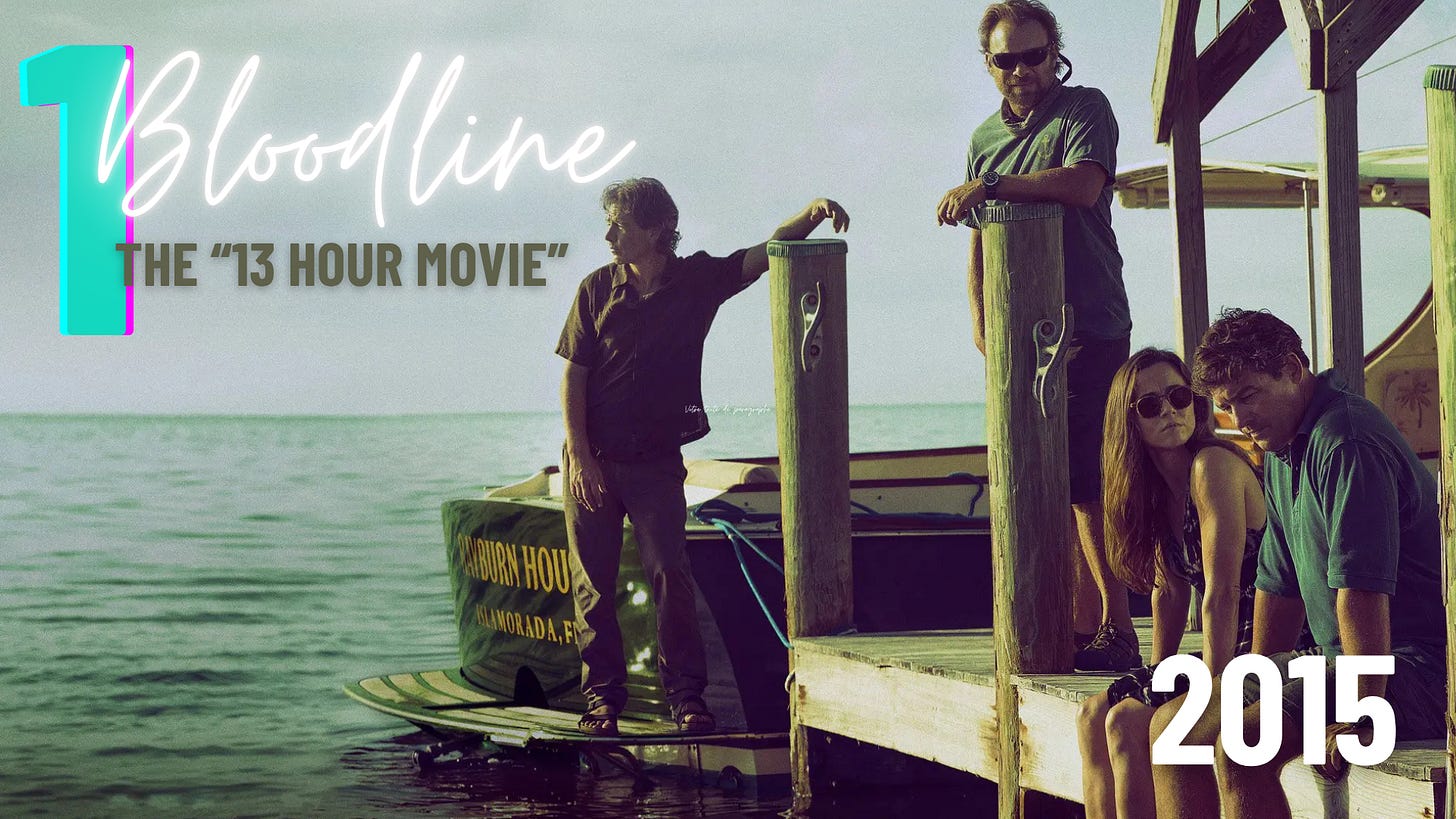HOW STREAMING PLATFORMS TRANSFORMED SCRIPTED TELEVISION #1
This summer, I’ve decided to take a look back at how streaming has reshaped the way we write television. Here’s the first installment…
2015 : BLOODLINE AND THE "13 HOUR MOVIE"
The now-familiar expression “13-hour movie” wasn’t coined by streaming platforms. It first gained traction in 2014 when True Detective was dubbed an “8-hour movie,” and again in 2018, when the Game of Thrones creators famously referred to their juggernaut as a “73-hour movie.” But my personal encounter with the term came in 2015, at the Série Series festival in Fontainebleau (France), when Bloodline showrunner Todd A. Kessler dropped the phrase during a masterclass.
Kessler explained that he and his brother Glenn conceived Bloodline for Netflix as a story structured in three large acts—unusual for them. The real game-changer, however, was designing a series meant to be consumed in one go, unlike their previous work on Damages, which aired on FX. Despite its serialized format, Damages was often viewed sporadically. By contrast, Bloodline’s all-at-once release allowed for a narrative architecture with slower pacing and long-tail dramatic payoffs. Kessler celebrated the freedom to ditch constant recaps and to plant narrative seeds that would only blossom several episodes later. Gone were the 10-minute ad-break cliffhangers. Remarkably, Bloodline’s 12th episode—not the pilot—was screened in preview at the festival.
Viewed from the landscape of 2025, this might feel like ancient history. Ten years ago, streaming audiences were smaller, more urban, and more educated—viewing series was an event, a ritual akin to going to the cinema. People didn’t binge Narcos on mute at 2x speed during algebra class.
Whether completion rates were better back then remains a mystery, thanks to the notoriously opaque data. But it’s safe to assume that a mix of novelty, quality, and scarcity—fewer platforms, fewer originals—yielded stronger engagement.
Beyond the catchy tagline, the “N-hour movie” phenomenon encapsulated three seismic shifts:
🎬 Cinema-Television Crossover: Filmmakers and stars once hesitant to touch television were now diving in. Think Fincher, Spacey, and Robin Wright in House of Cards.
💰 Rising Budgets and Production Values: Premium cable aesthetics (HBO, Showtime, Canal+, Sky) spilled into the streaming wars, where platforms upped the ante.
📀 From Episodic to Serialized: The 24-episode network format gave way to 6–10-episode seasons built for bingeing—formerly a DVD ritual—prompting film-world creatives to mistake series for very long movies.
Ironically, by labeling series “films,” Hollywood elites were attempting to elevate a format they had once dismissed as inferior. But even the most prestige-driven series operate under very different creative principles than films: structurally, emotionally, and narratively, they’re an entirely different beast. Director Olivier Assayas, who used the “8-hour movie” expression in a dialogue for one of his characters in Irma Vep (HBO, 2022), did so with full awareness that the two mediums follow adjacent but distinct storytelling codes.
Today, the landscape has shifted yet again.
📅 Back to Weekly Drops: Streamers have moved away from binge drops. Most now favor weekly releases or staggered episode blocks, stretching buzz and subscriber retention.
👁️ Welcome Back, Ad Breaks: The ad-supported tier is back, and with it comes a return to act breaks and tighter, more “efficient” storytelling. Series like Paradise (Hulu/Disney+) or Under a dark sun (Netflix) now clearly mark ad cues with a black screen, echoing the traditional four to five-act format.
In 2025, customer retention has overtaken acquisition as the core battlefront. Today’s viewers spend an average of 20 minutes deciding what to watch—crippled by “decision fatigue” and paralyzed by infinite scroll interfaces. This is Hick’s Law in action: the more options we have, the longer we take to choose. If watching TV begins to feel like a chore, it risks becoming the next cultural casualty—following books—swept aside by TikTok, gaming, or AI-powered escapism.
Let’s hope the sheer power of innovative storytelling is enough to keep tv series culturally vital for years to come.
Link to second article - 2014: Transparent, the Golden Age of Dramedy?
Link to third article - 2021: Lupin and the rise of “Elevated Mainstream”

